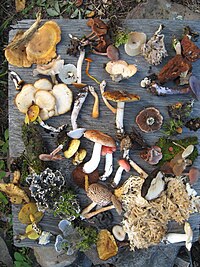
Photo from wikipedia
Recent theoretical and empirical studies have assumed that livestock grazing acts as a biotic filter favouring plant species with functional traits that confer resistance to herbivory. Considering that plant functional… Click to show full abstract
Recent theoretical and empirical studies have assumed that livestock grazing acts as a biotic filter favouring plant species with functional traits that confer resistance to herbivory. Considering that plant functional traits affect the species abundance and persistence in a community, alterations in functional diversity would result in changes in species richness, evenness or growth form composition. However, empirical tests of the intermediary role of functional diversity among livestock pressure, climate and species diversity and composition remain rare. We evaluated if functional diversity acts as an intermediary between livestock pressure and several components of taxonomical diversity in plant communities located along an aridity gradient in central-western Argentina. We estimated functional diversity using four plant traits that are expected to reflect trade-offs between resource-use strategies and grazing resistance. We found that livestock pressure increased shrub abundance by negatively affecting functional diversity, and this effect was amplified by increases in aridity. On the other hand, aridity promoted declines in species richness by reductions in functional diversity. Overall, our results suggest that functional diversity acts as intermediary component between livestock pressure and growth form composition; and also between aridity and species richness. Finally, our findings highlight that livestock grazing may be considered as a biotic filter affecting growth form composition but not species richness and evenness.
Journal Title: Plant Ecology
Year Published: 2020
Link to full text (if available)
Share on Social Media: Sign Up to like & get
recommendations!